
| Publisher: | Little, Brown | |
| Genre: | General, Fiction | |
| ISBN: | 9780316057561 | |
| Pub Date: | October 2011 | |
| Price: | $24.99 |
| Fiction |
by Daniel Woodrell
In his first story collection, the acclaimed author of Winter's Bone inverts Melville's white whale metaphor. Civilization, not brute nature, is the Moby Dick of Woodrell's arid, land-locked universe. His outlaws--disciples of Ahab--are hell-bent on erasing history and destroying the cultural values of anyone who appears foreign or merely different.
"Returning the River" illustrates the literal destruction of home and community if one, blindly heeding F. Scott Fitzgerald's lush epitaph, were to be "borne back ceaselessly into the past." "Woe to Live On," probably the most resonant story, takes the opposite approach: a Dutch-German immigrant and ex-Confederate soldier, in his zeal for complete assimilation, literally and figuratively murders his past, only to realize that his inheritance is the bitter taste of sawdust. Woodrell's modern American males, who have run out of frontiers to conquer, are hemmed in by tradition and diversity. In "The Echo of Neighborly Bones," a character from the Missouri Ozarks calls his neighbor "a foreigner" simply because the latter comes from Minnesota. In "Two Things," a long-suffering father disavows his prodigal son's salvation through poetry. Woodrell fills Outlaw Album with startling sentences that capture his rustic brand of American gothic: "Once Boshell finally killed his neighbor he couldn't seem to quit killing him"; "She has always carried on... hefting the parts of herself that remained... and remaining more decent than she had to be"; and "[T]oo much footwear and no clarity! clarity!"
On another level, Woodrell's Missouri backwoods evokes Camus' French Algiers, and even Babel's Odessa. It's no mystery why President Obama picked Woodrell's work to read on his vacation. The author's portrayal of American discontent mirrors global unease--we are both alienated from and emblematic of an era in which fundamentalists clash deeply with outliers. --Thuy Dinh, editor, Da Mau magazine
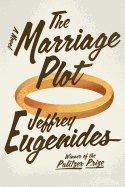
| Publisher: | Farrar, Straus & Giroux | |
| Genre: | Fiction, Literary | |
| ISBN: | 9780374203054 | |
| Pub Date: | October 2011 | |
| Price: | $28 |
| Fiction |
by Jeffrey Eugenides
Set in the early 1980s, The Marriage Plot paints a lavishly detailed portrait of a love triangle. Though its exploration of the lives and loves of its characters is often moving, the novel never quite reaches the level of those "books that reached through the noise of life to grab you by the collar and speak only of the truest things," one of its protagonists describes.
Madeleine Hanna, Leonard Bankhead and Mitchell Grammaticus are Brown University graduates taking their first tentative steps in the real world. Leonard, a brilliant manic-depressive, is the man who wins literature student Madeleine but can't keep her. Mitchell, a spiritual seeker, is the man who wants her but can't have her. The novel traces their intertwining paths in the months after graduation, as Madeleine and Leonard struggle to establish a firm relationship on ever-shifting ground and Mitchell departs for India.
Whether it's the Brown campus on graduation day, a wintry afternoon on Cape Cod, the desperate environment of Mother Teresa's Home for Dying Destitutes or the bipolar mind, Eugenides's descriptive powers are vivid and he displays a depth of characterization and commanding prose style that sustain the story's momentum.
But perhaps because the trials of Madeleine, Leonard and Hanna look more like stumbles than real falls, it's hard to shake the sense that the stakes here aren't quite high enough to engage us fully. Without denying its considerable pleasures, Eugenides's (Middlesex) novel ultimately amounts to something less than the sum of its parts. --Harvey Freedenberg, attorney and freelance reviewer
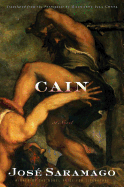
| Publisher: | Houghton Mifflin Harcourt | |
| Genre: | General, Fiction, Historical, Literary | |
| ISBN: | 9780547419893 | |
| Pub Date: | October 2011 | |
| Price: | $24 |
| Fiction |
by Jose Saramago, trans. by Margaret Jull Costa
"The history of mankind is the history of our misunderstandings with god, for he doesn't understand us, and we don't understand him." And that's putting it mildly, because Portuguese Nobel laureate José Saramago (1922-2010) goes on to hold the lord accountable for out-and-out wickedness and pacts with the devil. Cain provides Saramago with his final stage for haranguing the human race for all its selfish cruelty. When he's not harrowing you with the grim statistics of the lord's vengeance, he's entertaining you with his very dry wit, taking some delightful comic jabs at biblical tradition in his smart, ironic retelling of Genesis.
But Saramago has more than entertainment on his mind. He also has an agenda, as defiantly iconoclastic as anything in his other novels, to zero in on the unexplored bloodthirsty wickedness of the god of Genesis. Saramago turns Cain, the first murderer, into a measuring stick for the rest of the savagery and slaughter in the Old Testament. Fleeing Eden after his crime, he hurtles through biblical time, witnessing the never-ending Grand Guignol of human atrocities.
Saramago's wisdom can be gentle and ironic, a droll acceptance of human nature, and like a crotchety old man, he can scold: "the lord did a very bad job of bringing these people up." The legendary Lilith, reigning from her palace, reputedly a witch who can drive men crazy with her spells, is the one consistently pleasant, affectionate character on Cain's travels through time, and Cain's years as her paramour are his happiest.
He's there for the tower of Babel. He's there for the walls of Jericho. Cain acquires a "somber pessimism... during his successive journeys into the horrors of past and future." That's the only motive Saramago provides for the novel's extremely dark ending, in which Cain begins reducing the human population aboard the ark, one by one, hurling Noah's sons and their wives into the sea. Still, Cain and god go on arguing and bickering as the story draws to a close. It's easy to imagine Saramago now giving the lord a good piece of his mind in person. --Nick DiMartino, Nick's Picks, University Book Store, Seattle
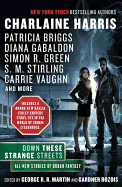
| Publisher: | Ace | |
| Genre: | General, Fiction, Fantasy | |
| ISBN: | 9780441020744 | |
| Pub Date: | October 2011 | |
| Price: | $26.95 |
| Science Fiction & Fantasy |
by George R.R. Martin and Gardner Dozois, editors
Things go bump and worse in the night in this urban fantasy story anthology, edited by George R.R. Martin (Game of Thrones) and Gardner Dozois (The Year's Best Science Fiction series editor). The showcased stories feature detectives who either are paranormal or investigate paranormal crime, ensuring a plethora of vampires, ghosts, shape-shifters and, of course, zombies. While fantasy fans will find favorite names on the cover like Charlaine Harris (Sookie Stackhouse series), Diana Gabaldon (Outlander series) and Patricia Briggs (Mercy Thompson series), they will also encounter top writers from the mystery genre, such as John Maddox Roberts (SPQR series).
This book boasts a stable full of star power. Harris kicks off the lineup with "Death by Dahlia," in which the vampire Dahlia Lynley-Chivers investigates the murder of a human blood donor with her equally undead partner, Matsuda Katamori. Gabaldon's "Lord John and the Plague of Zombies" takes Lord John Grey to Jamaica, where he is ordered to put down a slave rebellion--if the zombies don't get him first. Be sure you don't overlook "Hellbender" from Laurie R. King (Mary Russell series), in which we meet fascinating salamander/human hybrids fighting for basic rights, and "The Difference Between a Puzzle and a Mystery" by up-and-comer M.L.N. Hanover (Black Sun's Daughter series), in which an ordinary cop accepts help from a paranormal expert who isn't what he seems.
Grab this mystifying and chilling collection to start Halloween early this year! --Jaclyn Fulwood, graduate assistant, University of Oklahoma Libraries
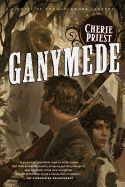
| Publisher: | Tor | |
| Genre: | General, Fiction, Fantasy | |
| ISBN: | 9780765329462 | |
| Pub Date: | September 2011 | |
| Price: | $14.99 |
| Science Fiction & Fantasy |
by Cherie Priest
Ganymede is the third novel in Cherie Priest's Clockwork Century sequence, set in a steampunk 19th-century North America where the Civil War is still being fought after more than two decades and various locales are infested with the living dead. Though there is some overlap with the preceding novels, Boneshaker and Dreadnought, the story is sufficiently self-contained that it can be read alone.
The story begins at the New Orleans boarding house owned by Josephine Early, a freewoman of color who's undertaking a secret mission for the Union. Several years earlier, an experimental Confederate submarine (the Ganymede) sank at the bottom of Lake Pontchartrain, and it's been covertly recovered by a band of guerrillas led by Josephine's brother. None of them can quite get the hang of its controls, though, so Josephine reaches out to her ex-boyfriend, an airship pilot named Andan Cly, a former pirate looking to go legit. He has no love for the Confederacy, so he and his crew agree to take the sub down the Mississippi to a U.S. naval vessel waiting in the Gulf of Mexico.
This is a rollicking adventure, but Priest also takes the time to give all her major characters, and many of her minor ones, depth and personality. Priest also makes sure readers are comfortably situated within her new version of American history, where Texas is again an independent republic and Louisiana's bayous are the home of a pirate utopia. The anachronistic technologies are sometimes surprising, but they readily fit within her world. Even after three novels, there are still plenty of unexplored corners in the Clockwork world, and you'll probably finish Ganymede eager to see where Priest is headed next. --Ron Hogan, founder of Beatrice.com
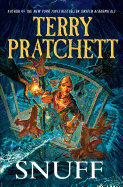
| Publisher: | Harper | |
| Genre: | General, Fiction, Fantasy | |
| ISBN: | 9780062011848 | |
| Pub Date: | October 2011 | |
| Price: | $25.99 |
| Science Fiction & Fantasy |
by Terry Pratchett
The bookshelves are, thankfully, bursting with writers who can captivate through plot, dialogue, characterization, imagination, wit, hilarity and dexterity; very few, however, simultaneously succeed at all of these as well as Sir Terry Pratchett. With every work he adds to his already monstrously large canon (39 and counting!) and proves that quantity need not degrade quality and that the fantastical, while often escapist, can also be the best sort of vehicle for greater truths.
Among these great, philosophical truths: if one has the money, there is no better way to keep a happy marriage happy than separate dressing rooms and bathrooms, and it is always better to live in a place where the mice and cockroaches fight each other than to live in a place where they have decided to forget their differences and gang up on the humans.
This addition to the Discworld series explores the ever-expanding jurisdiction of Commander Samuel Vines as he heads into the countryside for a relaxing family holiday. That is, a "relaxing family holiday" as Vines understands it, complete with goblins, paddle-boat chases, the inestimable Sybil Ramkin, crossbow-wielding valets and, of course, the Ankh-Morpork City Watch. Part murder mystery, part allegory, part English comedy and all good fun, this is Pratchett at his best: funny and sad, incisive and illogical, cynical and optimistic. Whether it be for the first time or the 39th, this is a trip to the Unnamed Continent not to be missed. --Katherine Montgomery, book nerd
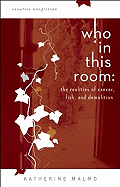
| Publisher: | Calyx Books | |
| Genre: | Health & Fitness, Literary Collections, General, Women's Studies, Women's Health, Social Science, Essays | |
| ISBN: | 9780934971126 | |
| Pub Date: | October 2011 | |
| Price: | $14.95 |
| Starred | Nonfiction |
by Katherine Malmo
Imagine a Venn diagram with three circles: one each for short stories, personal essays and memoir. Katherine Malmo's Who in This Room falls where these circles intersect, drawing upon aspects of each genre to invent a new form. Her fierce, no-nonsense collection pushes other storytelling boundaries as well, using different points of view--Kate, you, I--to tackle the intensely personal subject of her inflammatory breast cancer and the twisted, harrowing (but caustically humorous) journey to recovery. It's not a cancer memoir, though; Malmo professes her desire to write about "non-cancer life," too, and breast cancer ultimately plays a supporting role, second to Malmo's vibrant perspective, her candor and poetic sensibility, her self-awareness and wit.
"Your yoga instructor will tell you to tell your body it is healing," she writes in the title piece. "Your body will call her a liar. Your body will be right." In "The Oxygenated World," when Kate's husband, Ben, offers to shave his head, too, "she said it was a sweet idea and all, supportive, but really it just made two bald freaks walking down the street instead of one."
Juxtaposing the ordinary and the absurd, Malmo divines and articulates the relationships between chemotherapy and fly-fishing, fashion tips and a biopsy report, welding and marriage, casino demolition and adoption. The musical precision of her words is felt in the body, cutting straight to the core. You emerge from Who in This Room as if from a vigorous swim, refreshed and more alive. --Claire Fuqua Anderson, fiction writer
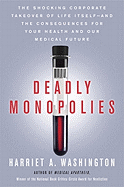
| Publisher: | Doubleday | |
| Genre: | Intellectual Property, Ethics, Medical, Law, Patent | |
| ISBN: | 9780385528924 | |
| Pub Date: | October 2011 | |
| Price: | $28.95 |
| Nonfiction |
by Harriet A. Washington
Harriet A. Washington has serious objections to corporations' place in the American health care system. In Medical Apartheid (which won a National Book Critics Circle Award), she traced the abuse African-Americans have suffered at the hands of researchers through history. Deadly Monopolies continues to examine the myriad ways in which the system falls short for many. It is alarming and thought-provoking--and, starting from the title itself, explicit in its thesis.
Washington makes the case that an array of factors--elements of patent law, lucrative partnerships between universities and pharmaceutical companies, and so on--are driving up costs, limiting access to care and stifling innovation. She doesn't limit herself to the U.S., either, reporting extensively on sketchy medical trials conducted abroad and the difficulty of securing pricey drugs in the developing world. The economics of the pharmaceutical business are such that developing a medication to treat unwanted facial hair takes precedence over curing sleeping sickness.
Deadly Monopolies could have been a polemic, long on tirades and short on evidence, but Washington is thorough, diving into the details of specific lawsuits and clinical trials to make her case. There's room for debate about her conclusions--for example, pharmaceutical companies would likely argue they spend far more on R&D than Washington claims--but this is essential reading to educate yourself on these hot-button issues. --Kelly Faircloth, freelance writer
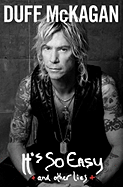
| Publisher: | Touchstone | |
| Genre: | Rich & Famous, Biography & Autobiography, Rock, Composers & Musicians | |
| ISBN: | 9781451606638 | |
| Pub Date: | October 2011 | |
| Price: | $26 |
| Biography & Memoir |
by Duff McKagan
Within the first few pages of this memoir, former Guns N' Roses bass player Duff McKagan is on the verge of death after crippling alcoholism caused his pancreas to swell to the size of a football and burst. But before McKagan revisits that rock-bottom moment and the spiritual and physical redemption that followed it, he explains how he came to be in the ER at 30 years of age, impervious to morphine and begging his doctor to kill him.
That story starts with a punk-rock youth in Seattle, a move to Los Angeles at 20 and a want ad for a bassist placed by someone named "Slash." A couple of years later, after rigorous rehearsing and even more rigorous partying, Guns N' Roses was playing sold-out stadiums. But conflicts within the band--largely spurred by Axl Rose's notorious antics--were amplified by drug abuse and shoddy management. As the band fell apart, so did McKagan, and he slipped deeper into a soul-crushing addiction and misery that nearly killed him.
But it didn't, and 17 years later, McKagan is not only frontman of the band Loaded, but also a husband, father, Seattle University student and wealth-management consultant for other musicians.
in a book that mourns friendships and talent lost to drugs, his transformation is a relief and an inspiration. McKagan writes with honesty and even humility, seemingly refreshingly devoid of rock star egomania. But though his recounting of his supposed glory days is decidedly unglamorous, there are still plenty of wild stories of debauched rock 'n' roll excess for anyone looking to live vicariously. --Hannah Calkins, blogger at Unpunished Vice
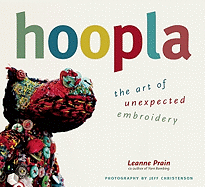
| Publisher: | Arsenal Pulp Press | |
| Genre: | Needlework, Embroidery, Crafts & Hobbies | |
| ISBN: | 9781551524061 | |
| Pub Date: | October 2011 | |
| Price: | $29.95 |
| House & Home |
by Leanne Prain
If your last experience of embroidery involved patterns of Sunbonnet Sue or dancing vegetables, it's time to give decorative stitchery another try. The DIY movement has embraced the needle arts, and Aunt Martha's iron-on transfers are a thing of the past. Leanne Prain, author of Yarn Bombing, offers a wonderful introduction to the subversive new world of embroidery in Hoopla: The Art of Unexpected Embroidery.
Hoopla combines a basic introduction to embroidery techniques with edgy patterns and heavily illustrated interviews with unconventional needle artists. The how-to section is well done; the illustrations of basic stitches are clear and the discussion of tools and materials is so informative that even an experienced needleworker may learn a thing or two. (Don't lick the end of your thread before you stick it in your needle--over time the eye will rust.) Prain's philosophy of needlework--"stitch like you mean it!"--is an inspired call to slow down, discover the power of silence and remember how to play.
For the most part, the patterns share an urban, DIY sensibility: knuckle tattoos on ladylike white gloves, needlepoint breasts set in vintage doilies, hankies decorated with microbes. The instructions are clear enough for a beginner to follow, and experienced embroiderers will find the interviews more exciting than the projects. Prain talks to conceptual artists, guerilla stitchers, mixed media artists, a self-proclaimed "manbroiderer" and a member of the Royal School of Needlework about how and why they stitch. Both the answers and the needlework are, well, unexpected. --Pamela Toler, blogging at History in the Margins
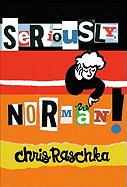
| Publisher: | Michael Di Capua Books/Scholastic | |
| Genre: | General, Juvenile Fiction | |
| ISBN: | 9780545298773 | |
| Pub Date: | October 2011 | |
| Price: | $17.95 |
| Children's & Young Adult |
by Chris Raschka
It's an absolute first... a middle-grade novel that will have readers (okay, some readers) actually wanting to read the dictionary from A to Z.
Twelve-year-old New Yorker Norman Normann isn't interested in the overtly "algogenic" task either when his inscrutable tutor Balthazar Birdsong first assigns it as preparation for an upcoming admissions test. But then Norman starts seeing these newly learned words everywhere. Wasn't the fur-hatted foreign minister in his dad's study from Alfur? What unsettling coincidences could the "B" section hold? Might it hold clues to what his father is doing selling bombs? Initially, Norman's best friend, Leonard Piquant, doesn't grasp Balthazar's methodical madness. "You should be spending what's left of your precious childhood wisely, playing computer games, skateboarding, eating entire bags of Doritos," Leonard says.
The possibly dangerous secrets of Norman's father's unnerving occupation keep the story suspenseful--while Balthazar keeps it philosophical, encouraging his students to literally "go fly a kite" if they really want to learn something substantive. (Standardized testing gets a swift kick in the pants here.) The boys' friendship is realistically goofy and even heartwarming amidst karate "Eeeeeeyaaa!"s and German chicken-butt jokes. Witty twins Emma and Anna (forming the "Quadrumvirate"--see "Q") moderate the boy energy only slightly.
Caldecott artist Chris Raschka proves his pen is mighty, too, in his pleasantly ridiculous, laugh-out-loud funny fiction debut. It's not only a word-and-wordplay extravaganza, but also a boisterous intercontinental adventure involving Alfurian spies, durian, kiteboarding and, perhaps most formidable of all, a tenderhearted mom. (Final art not seen by Shelf Awareness.) --Karin Snelson, freelance writer and children's book editor
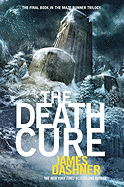
| Publisher: | Delacorte | |
| Genre: | Environment, Science Fiction, Juvenile Fiction, Action & Adventure, Nature & the Natural World, Survival Stories | |
| ISBN: | 9780385738774 | |
| Pub Date: | October 2011 | |
| Price: | $17.99 |
| Children's & Young Adult |
by James Dashner
In The Maze Runner, the Gladers escaped the Maze in which WICKED (World in Catastrophe: Killzone Experiment Department) trapped them after extracting their memories. They next survived the threatening pandemic Flare disease in The Scorch Trials.
James Dashner's third and final installment, The Death Cure, begins with the Gladers inside WICKED's headquarters, where the Rat Man offers to "remove" the Swipe and return their memories. But Thomas, whose memories have started coming back, would rather forget his time as an agent of WICKED and all the experiments and trials he engineered. The Gladers escape WICKED in groups, hoping to reunite in Denver's quarantined zone, where Munies (those who are Immune to the Flare) are despised. Thomas is being chased down by bounty hunters for being the Final Candidate--the one whose memories are the last piece to the puzzle.
This action-packed conclusion brings readers full circle with its return of old enemies--some mortal, others monstrous, such as Grievers and Cranks. Thomas may also have to return to where it all started for him and the others--the Maze itself--in order to complete the blueprint for the Flare's cure. It's truly the best of the trilogy with its explosive ending, in which Dashner answers the trilogy's biggest question: Is WICKED good? --Adam Silvera, a bookseller and intern at Figment
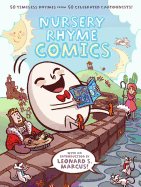
| Publisher: | First Second | |
| Genre: | Fantasy, Literary, Comics & Graphic Novels | |
| ISBN: | 9781596436008 | |
| Pub Date: | October 2011 | |
| Price: | $18.99 |
| Children's & Young Adult |
by Chris Duffy, editor
Stephanie Yue reveals that it's not that the mouse was afraid of the clock in "Hickory, Dickory, Dock." Instead, the furry creature is nearly late for work in the bell tower. So the mouse, awakening from a nap, runs "up the clock" to strike it once with a mallet ("bong"), then runs down to resume its siesta. Why do the "Three Blind Mice" chase after the farmer's wife? Richard Sala suggests it's because they smell the freshly made cake she carries. Once she sets the cake down, she metes out their punishment ("with a carving knife"), and the now short-tailed trio heads for the exit. Perhaps one of the enduring puzzles in the nursery rhyme world is the narrative for "Rock-a-Bye Baby" with its suggestion of a hard fall "when the bough breaks." Tao Nyeu's interpretation gives us a self-sufficient "baby"--a lamb that takes a tumble but lands on its hooves. When a wolf villain "breaks" the bough with a chain saw, the cradle crashes onto the wolf's back and the lamb takes possession of the saw.
The volume presents a cornucopia of approaches to visual storytelling, and the 50 contributors to this compendium reads like a who's who of the graphic novel kingdom. --Jennifer M. Brown, children's editor, Shelf Awareness